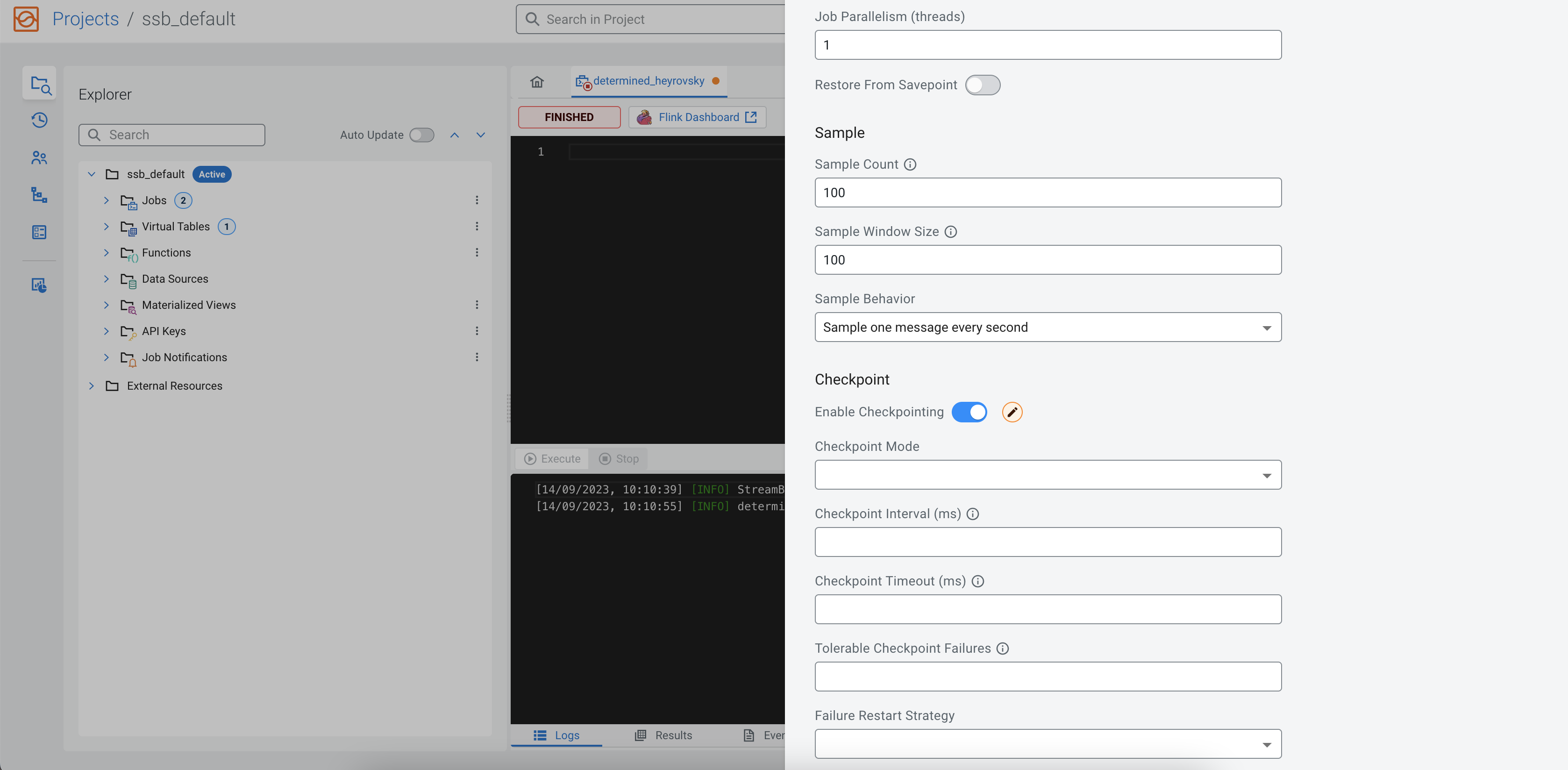Creating Iceberg tables
Apache Iceberg is an open, high-performance table format for organizing datasets that can contain petabytes of data. Iceberg can be used to add tables to computing engines, such as Apache Hive and Apache Flink, from which the data can be queried using SQL.
As Iceberg is integrated as a connector to Flink, you can use the table format the same way for SQL Stream Builder (SSB). Both the V1 and V2 version specifics are supported by the Flink connector. For more information, about Iceberg and versions, see the Apache Iceberg documentation and the Apache Iceberg in CDP documentation.
| Feature | SSB |
|---|---|
| Create catalog | Supported |
| Create database | Supported |
| Create table | Supported |
| Alter table | Supported |
| Drop table | Supported |
| Select | Supported |
| Insert into | Supported |
| Insert overwrite | Supported |
| Metadata tables | Supported |
| Rewrite files action | Supported |
| Upsert | Technical preview1 |
| Equality delete | Technical preview |
Using Hive for Iceberg integration
When using the Hive service located on your cluster, you can add it as a catalog on Streaming SQL Console. Before creating the Iceberg table, ensure that you have added Hive as a catalog using the steps described in documentation.
CREATE
TABLE statement as the example shows
below:CREATE TABLE iceberg_hive_table (
col_str STRING,
col_int INT
) WITH (
'connector' = 'iceberg',
'catalog-database' = 'test_db',
'catalog-type' = 'hive',
'catalog-name' = 'iceberg_hive_catalog',
'catalog-table' = 'iceberg_hive_table',
'ssb-hive-catalog' = 'ssb_hive_catalog',
'engine.hive.enabled' = 'true'
);| Property | Example | Description |
|---|---|---|
catalog-database |
test_db |
The Iceberg database name in the backend catalog, uses the current Flink database name by default. It will be created automatically if it does not exist when writing records into the Flink table |
catalog-type |
hive |
Type of the catalog |
catalog-name |
iceberg_hive_catalog |
User-specified catalog name. It is required as the connector does not have any default value. |
catalog-table |
iceberg_hive_table |
Name of the Iceberg table in the backend catalog. |
ssb-hive-catalog |
ssb_hive_catalog |
The name of the Hive catalog you have provided when adding Hive as a catalog. |
engine.hive.enabled |
true |
The engine.hive.enabled configuration is required to enable
Hive compatibility. The configuration is automatically set to
true if there is no custom value specified. |
- Access the Job Settings page from the SQL Editor.
- Enable Checkpointing using the toggle, and configure the
checkpointing settings based on your requirement.

Using the Hive service from Cloudera Data Warehouse (CDW)
- Ensure that the
ssbuser has access to theall - database, tablepolicy under the Hadoop SQL service.For more information, see the Configuring Hive policies documentation.
- Access Cloudera Manager of the CDW environment.
- Click .
- Download the
hive-conftarball.The downloaded tarball needs to be uploaded to the Flink cluster.
- Copy the
hive-confto the Flink cluster.scp <location>/hive-conf <your_username>@<flink_dashboard_hostname>:. Password:<your_password> - Extract the file under the
/tmpdirectory that is accessible by thessbuser using the following commands:mkdir /opt/hive-conf cd /opt/hive-conf tar -xvf /path/to/hive-conf.tar.gz chmod a+x . chmod -R a+r . - Access the Streaming SQL Console and create the table using the following example or
select Iceberg from the Template drop-down
and fill out the required
parameters:
CREATE TABLE my_ssb_table ( id INT ) WITH ( 'connector' = 'iceberg', 'catalog-name' = 'internal-use', 'catalog-database' = 'default', 'catalog-table' = 'my_iceberg_table', 'hive-conf-dir' = '/opt/hive-conf', 'engine.hive.enabled' = 'true' );
